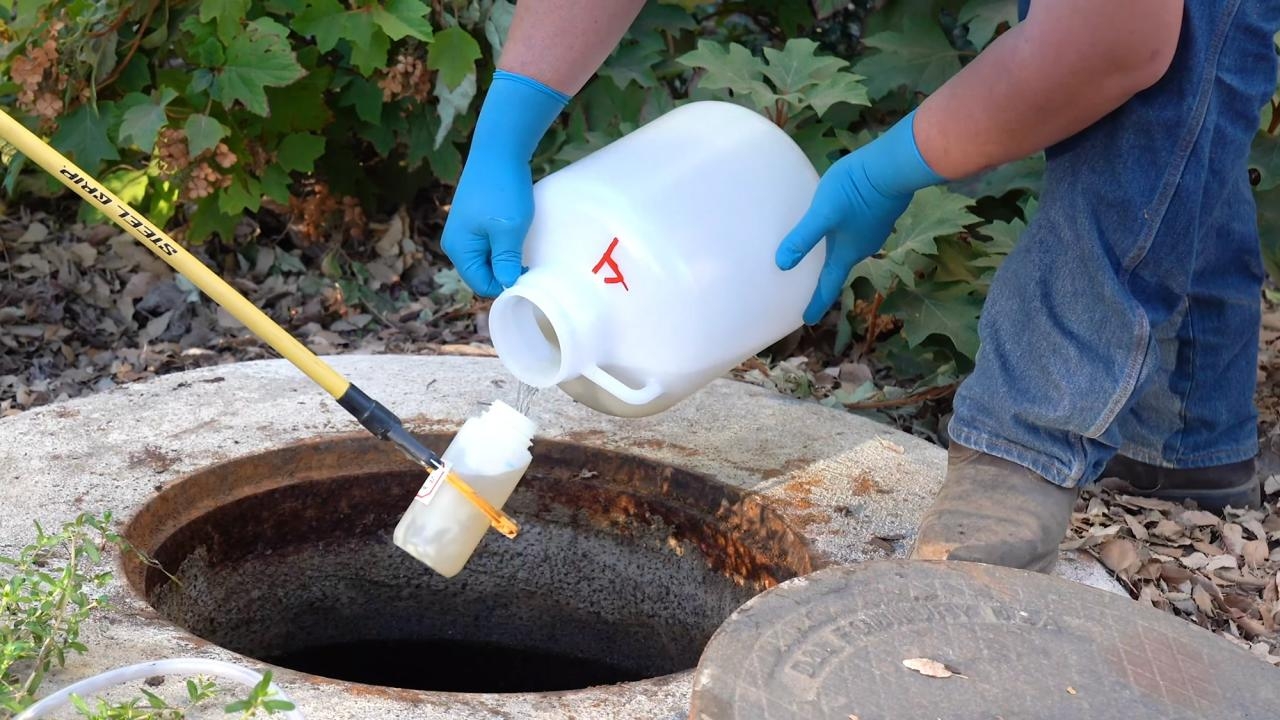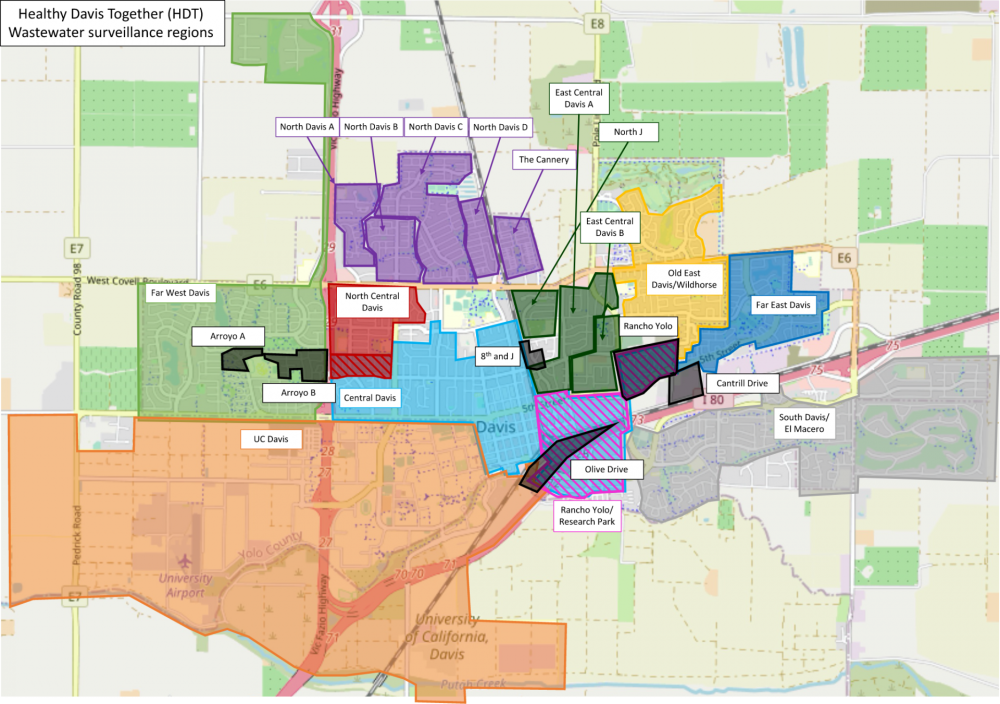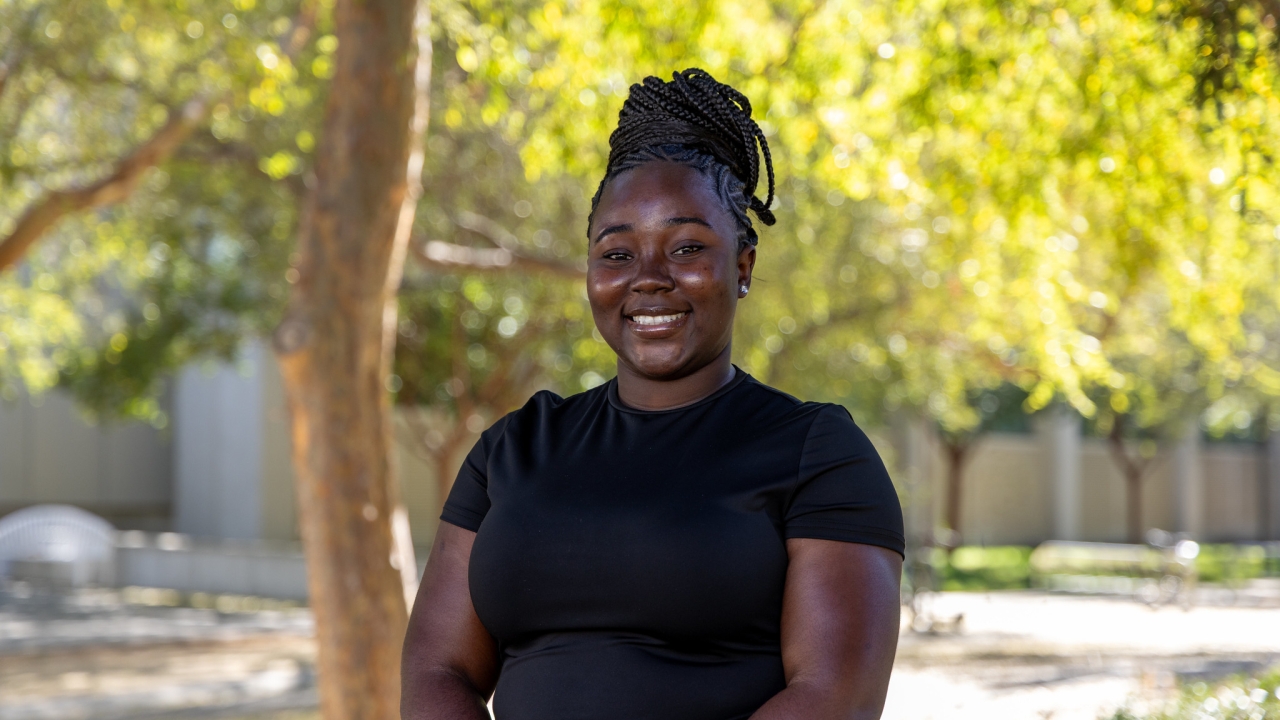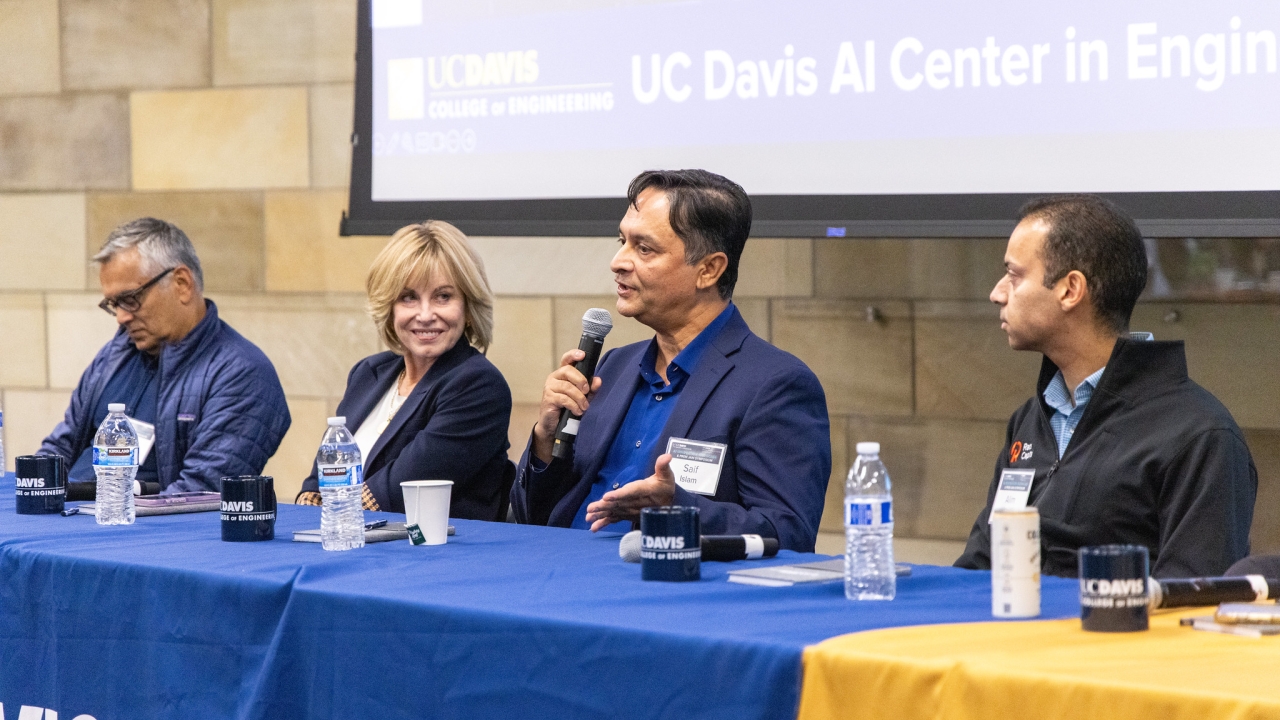
New Ways to Detect COVID-19
UC Davis engineers Cristina Davis and Heather Bischel are using their respective expertise to develop new ways to detect COVID-19.
Davis is developing a portable breathalyzer-like device that rapidly diagnoses COVID-19 and tells doctors how severe the case is going to be. Bischel is using wastewater to detect the virus, follow viral trends across the City of Davis and the UC Davis campus and help prevent outbreaks. Both methods are poised to become staples in the response to COVID-19 and future pandemics.
A breath test for COVID
Mechanical and aerospace engineering professor Cristina Davis’ lab is working to find COVID’s “breath signature” and develop handheld devices that can identify it quickly and accurately, as well as predict the severity of the case. When the pandemic hit, her team was developing similar devices for the flu with collaborators at the UC Davis School of Medicine, so they quickly pivoted to COVID.

(Photo: Gregory Urquiaga/UC Davis)
Davis and her colleagues have received $2 million from the National Institute of Health, the U.S. Department of Veteran Affairs and University of California’s CITRIS and the Banatao Institute and they are already enrolling patients in clinical studies.
“The idea that exhaled breath could hold diagnostic potential has been around for some time,” Davis told the New York Times’ Emily Anthes, who featured the project this summer. “There are reports in ancient Greek and also ancient Chinese medical training texts that reference a physician’s use of smell as a way to help guide their clinical practice.”
To find the “breath signature,” the team is looking at two aspects of breath—condensate and vapor.
Condensate is a collection of millions of tiny aerosol droplets that are exhaled, condensed into a liquid in the devices. These aerosols, which help spread the virus, come from the airway and lungs and can contain chemical and biological markers that show how sick a person is. Vapor is the chemicals people exhale: nitrogen, carbon dioxide, oxygen and volatile organic compounds (VOCs), which give breath its smell. Dogs have been trained to detect diseases like diabetes from smell, so the idea that this could be done for COVID isn’t far-fetched.
“All of these inflammatory markers can show up in these metabolites and tell us a lot about your airway health and how you’re doing,” explained Mitch McCartney, the lab’s research director, adding that this is a way to detect the “cytokine storm” COVID causes that can lead to organ damage.
If successful, the team sees the devices both as inexpensive, non-invasive and rapid alternatives to polymerase chain reaction (PCR) and cotton swab tests, as well as a way for doctors to remotely monitor their patients’ condition when they’re at home.
“It would be a device you can breathe into at home that could do all of the chemical analysis of your breath, then upload that information to your doctor,” said McCartney. “This device might be able to alert your doctor if your inflammation levels are increasing so they can preemptively ask you to come into the hospital.”
Though these devices are being developed in response to COVID-19, Davis and McCartney think they’ll become invaluable tools for medical practitioners and public health officials.
Wastewater as an early warning
Civil and environmental engineering assistant professor Heather Bischel leads the COVID-19 wastewater monitoring effort for the UC Davis campus, Healthy Davis Together (HDT)—the City of Davis’ asymptomatic testing program—and Yolo County.

(Photo: Katherine Hung/UC Davis)
“Many people don’t get tested until they’re symptomatic, but they’ll start shedding the virus about a week before they show symptoms, so wastewater is a way to catch COVID early,” she said.
Wastewater samples are taken from 42 buildings or groups of buildings on the UC Davis campus and 24 neighborhood locations across the City of Davis and delivered to Bischel’s laboratory multiple times per week. The team treats the samples and runs a PCR test to look for the presence and concentration of RNA associated with the SARS-CoV-2 virus that causes COVID-19.
If a building or neighborhood has multiple strong positive results, they know there’s likely an increase in cases in that area and perhaps an outbreak. City or campus officials can then send targeted messages to residents encouraging them to exercise caution and get tested to prevent community spread. On the UC Davis campus, it’s also a way to verify asymptomatic testing results.
“Our monitoring gives the public health response team some peace of mind if the environmental information corroborates what we’re seeing with testing,” she said. “It triangulates the evidence.”
Bischel says the project is both research and service. She is working with UC Davis statisticians to assess the effectiveness of sub-sewershed sampling in cities, and her lab is experimenting with different methods of sample processing and testing to make the program fast and efficient. The HDT team is also testing the viability of the targeted messaging system on a large scale. Developing these best practices will help communities better respond to this and future pandemics.
“The research opportunities are pretty broad for how we, as environmental engineers, can contribute to combating public health challenges,” she said. “I think we’re just scraping the surface right now.”
Bischel was already researching ways to detect viruses in wastewater before the pandemic, so when it was clear this could work with COVID-19, she and her UC Davis colleagues Karen Shapiro at the School of Veterinary Medicine and Jonathan Eisen at the College of Biological Sciences put together a proposal to begin wastewater monitoring on campus.
The campus set up a successful pilot program in summer 2020. It was expanded to 22 locations a few months later as students began living on campus. Shortly afterwards, HDT approached her about setting up a similar system for the City of Davis and the groups have been partners since.

(Healthy Davis Together)
To Bischel, the next step is expanding wastewater monitoring equitably. California’s cities have robust wastewater treatment systems, but rural communities—which often have lower testing and vaccination rates—don’t have resources to add COVID-19 monitoring to their operations. In collaboration with a colleague at UC Merced, the lab has begun onboarding wastewater treatment facilities in rural parts of Yolo, Stanislaus and Merced Counties. Their goal is to understand the unique challenges these communities face and how to address them.
“When this pandemic is over, we can take advantage of the infrastructure we put in place,” she said. “Water quality monitoring is already commonplace for wastewater facilities, but there’s an opportunity to use virus monitoring as an ongoing public health tool for pandemic prevention.”
This story was featured in the Fall 2021 issue of Engineering Progress.




